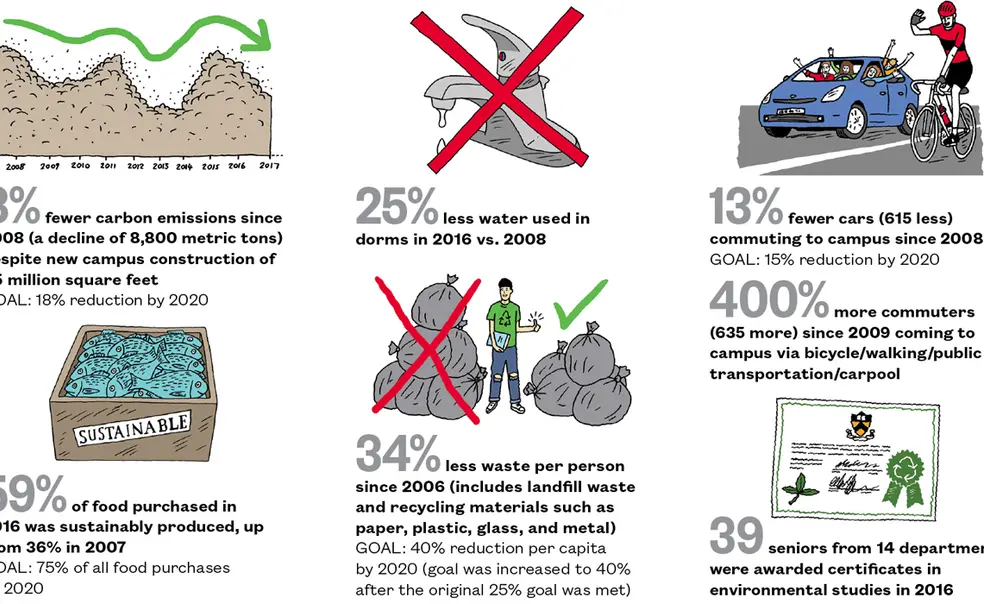Sustainable Goals: With progress on 2008 campus objectives, emphasis turns to having broader impact
As Princeton enters the final years of a 12-year sustainability plan designed to reduce its environmental footprint, officials say the University is on track to meet most of its goals and is planning a new set of objectives.
In February 2008, Princeton adopted a plan with goals to be achieved by 2020. They included reducing greenhouse-gas emissions to 1990 levels, conserving resources, and promoting a “living laboratory” setting for students through research, education, and civic-engagement opportunities.
Shana Weber, director of the Office of Sustainability, said the University is shifting its focus to thinking about how the data it has gathered — and will continue to gather — can be applied more broadly. Efforts such as the Washington Road stream-restoration project, for example, could be adapted by others.
“There’s very little point to improving things just on the campus if it’s not having any sort of scalable impact,” Weber said. “Now we have a good sense of the full scope of the sustainability challenge and can plan for the local, regional, and global impacts we’d like to have.”
Although the University is less than halfway to accomplishing its ambitious carbon-emissions reduction goal with three years to go, Weber said that “strategies are in place indicating that the target will be met.”
She said new sustainability goals will be part of the 2026 campus plan, which is scheduled for completion next fall.











No responses yet